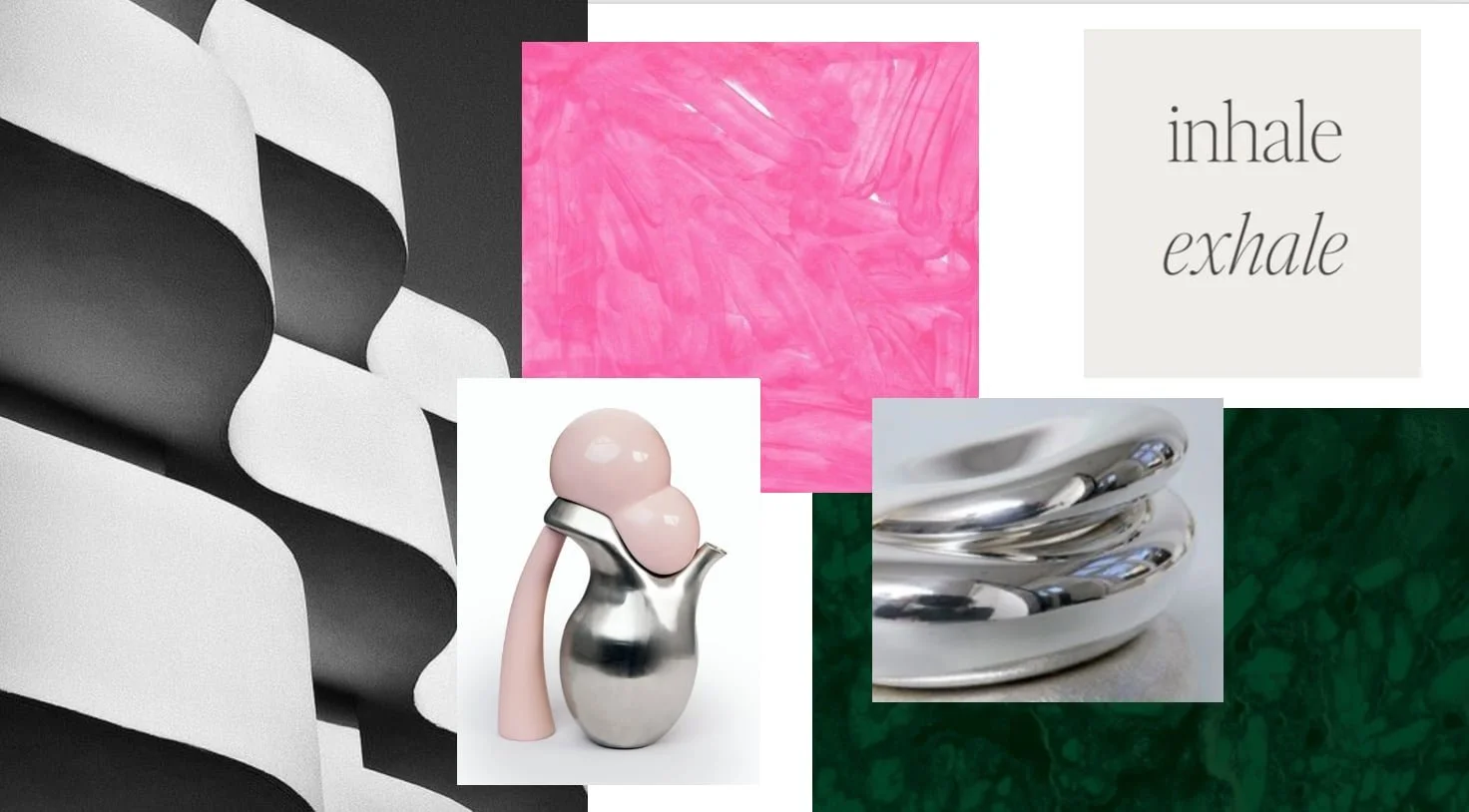Full business and design process
This project follows the Design Thinking process – from user insight and problem definition to ideation, prototyping, and testing. It’s a human-centered approach that ensures the final concept is both relevant and realistic – balancing emotional value with business potential.
Project
Interlude was developed as part of KEA’s 2025 wearable technology course. The brief was to create a digital or analogue jewellery-based wearable that supports a specific user need. Rather than pursuing a tech-first solution, we focused on designing for emotional wellbeing. Our concept, Interlude, became a tactile, screen-free breathing ring that helps women in menopause manage stress through physical grounding.
The goal was to support the user — not overwhelm her. The design process was guided by the Stanford Design Thinking methodology, integrating user empathy, co-creation, and iteration at every stage.
Research & Business context
Empathize
We started by exploring the lived experience of women in menopause — a life stage still under-addressed in mainstream design. Through interviews, diary studies, and surveys, we collected first-hand accounts of physical symptoms, emotional states, and behavioral coping mechanisms.
Market and trend analysis
Brand Brief
Spidergram with competitors
SWOT
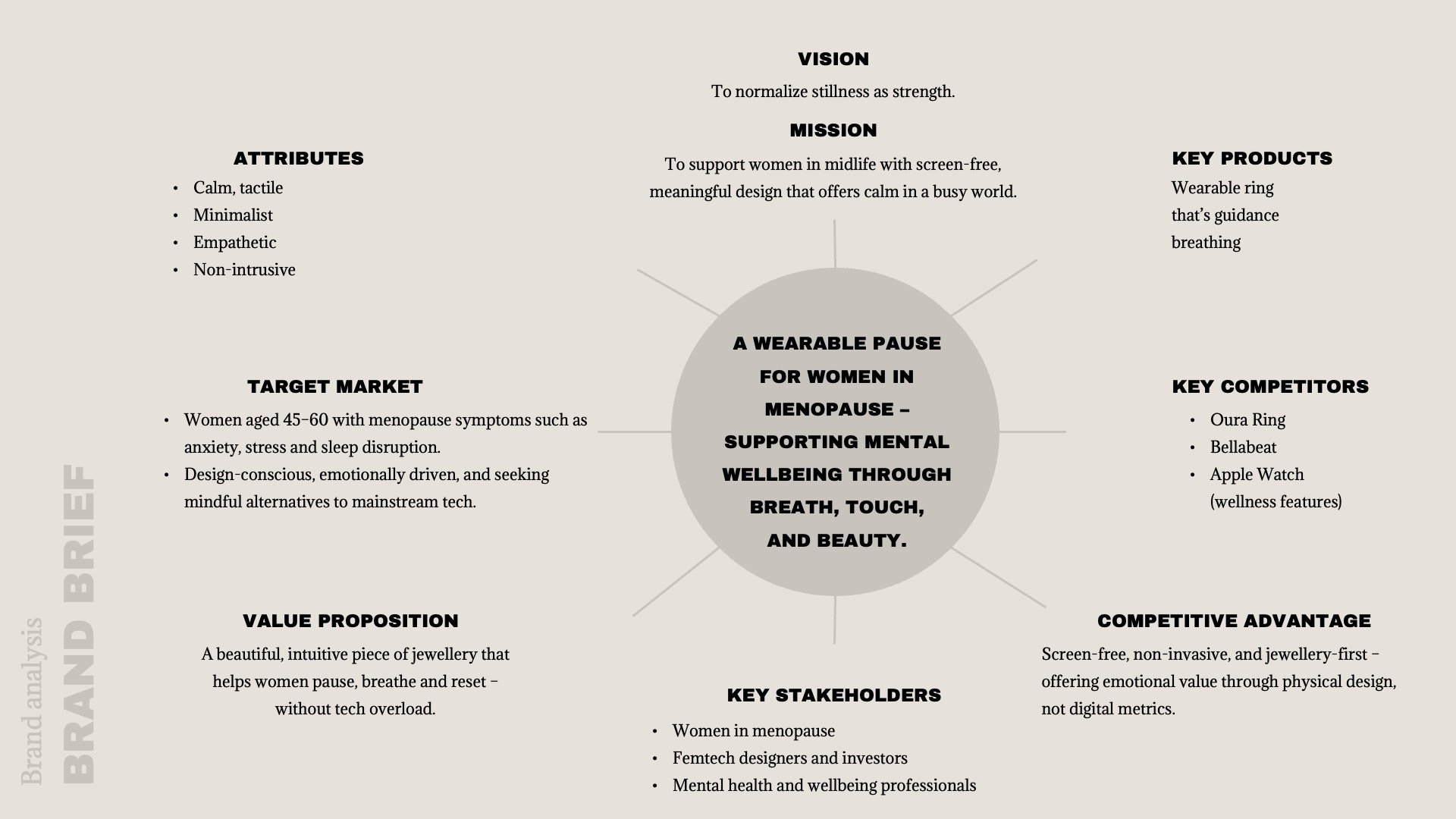

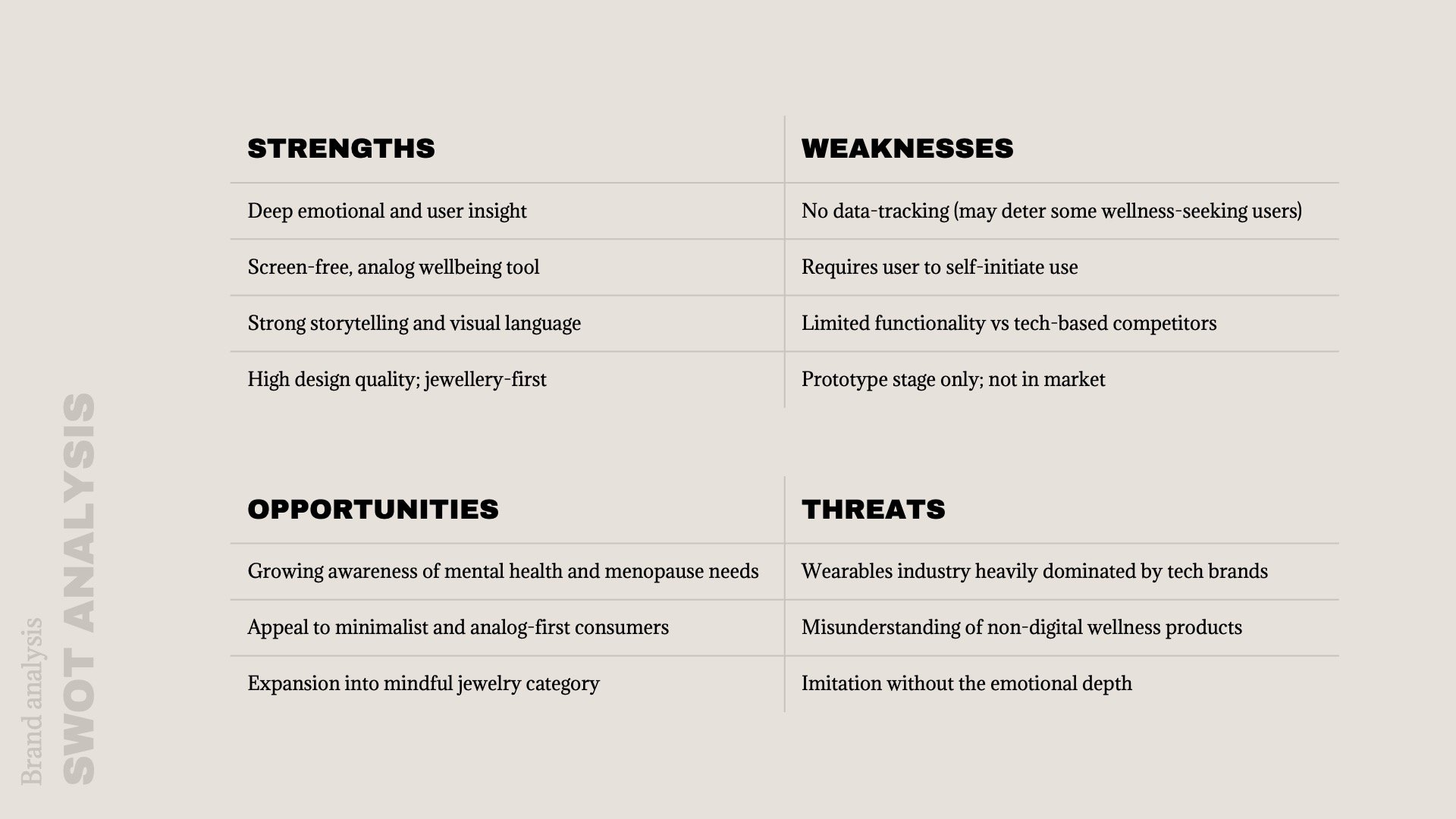
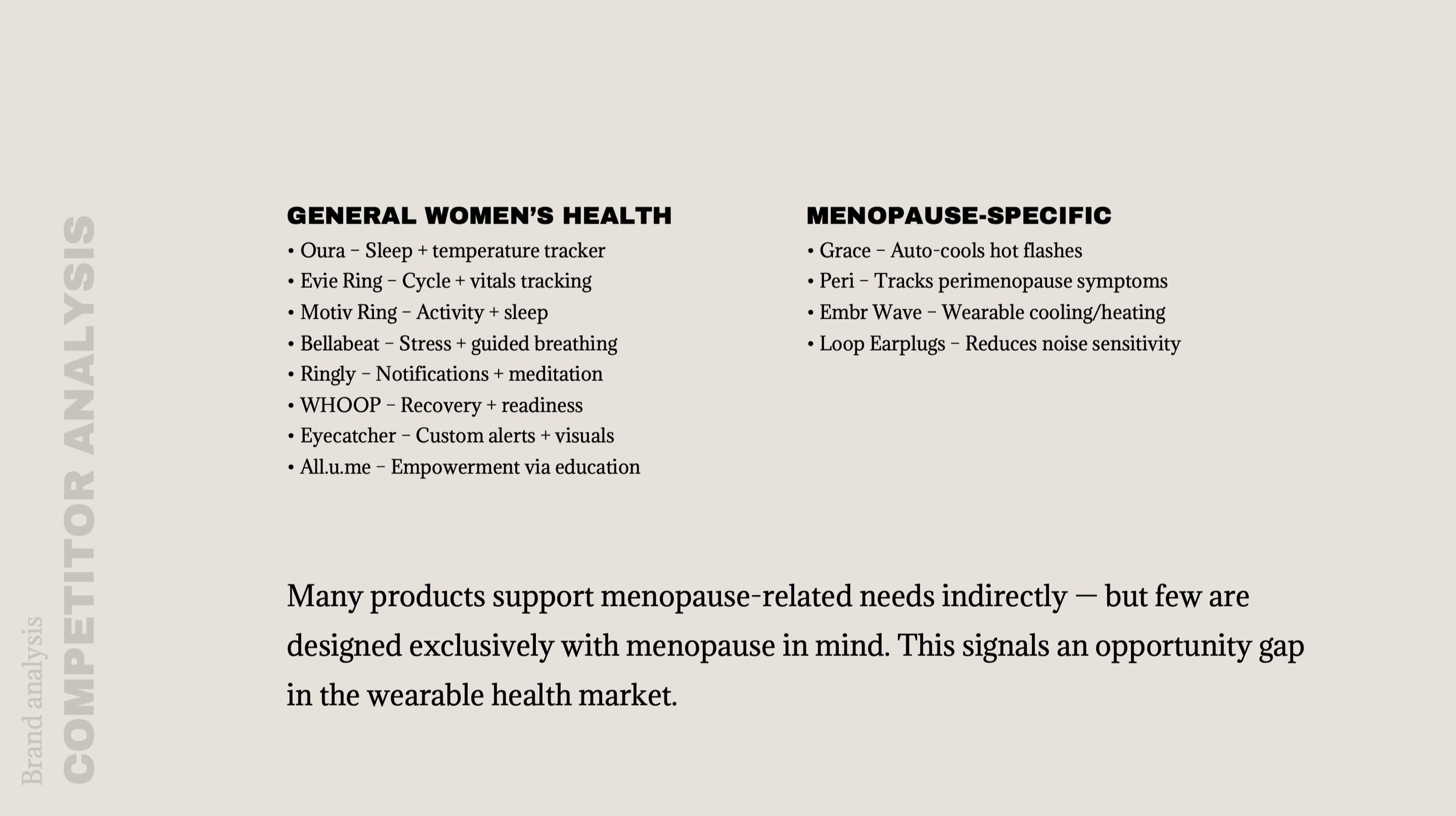
Target Group, Persona & Strategic Framing
Define
We synthesized the emotional and functional needs from our research into actionable direction. Our user did not want more data, screens, or complexity — she wanted beauty, grounding, and ease.
Persona: Lise-Lotte (52)
A visual arts teacher on stress leave, she uses only basic tech and wears a few carefully chosen pieces of meaningful jewellery. She values comfort, simplicity, and objects that help her stay grounded.
How Might We:
How might we create a calming piece of jewellery that helps women in menopause reconnect with themselves — without screens, stress or complexity?
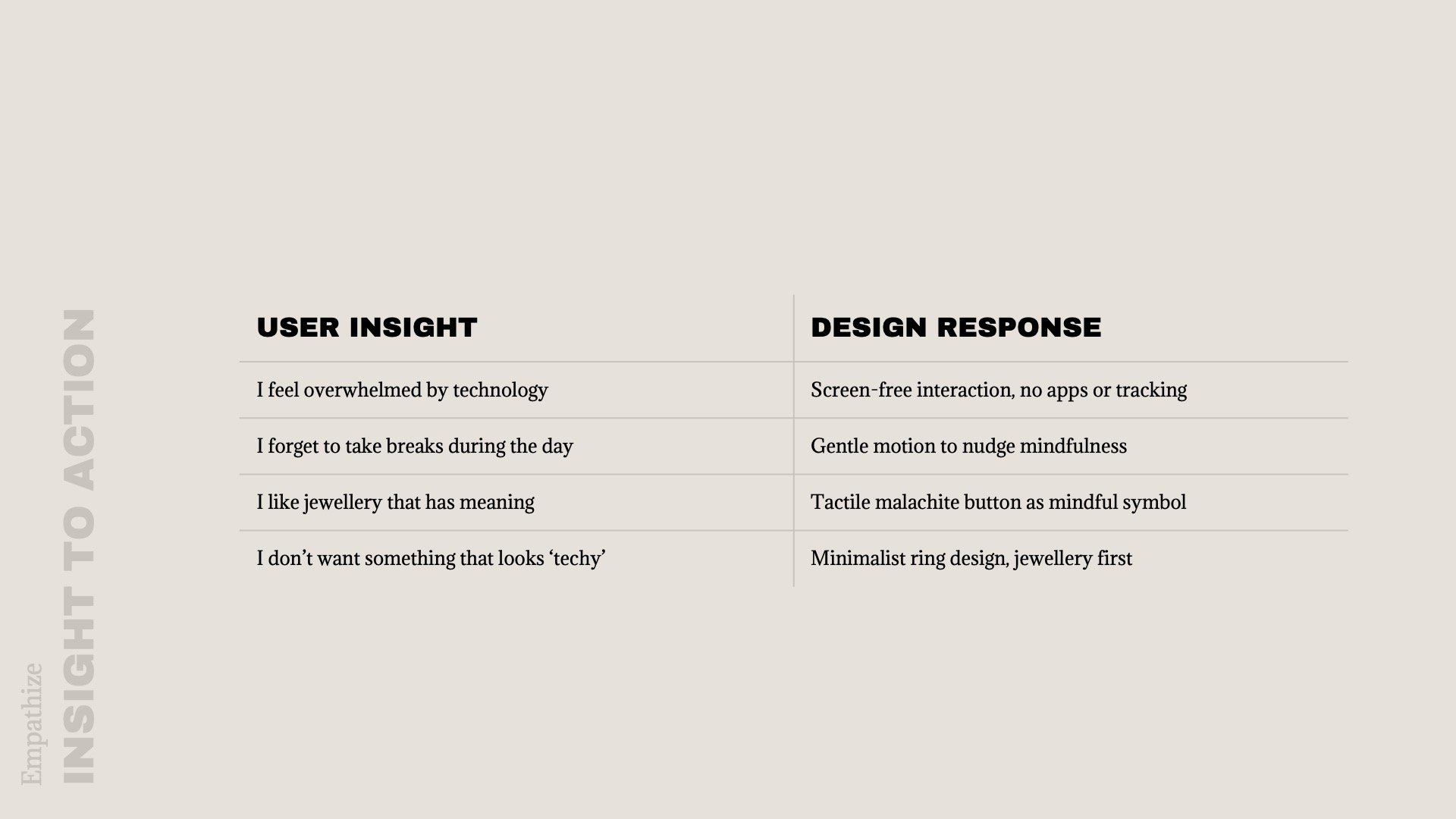
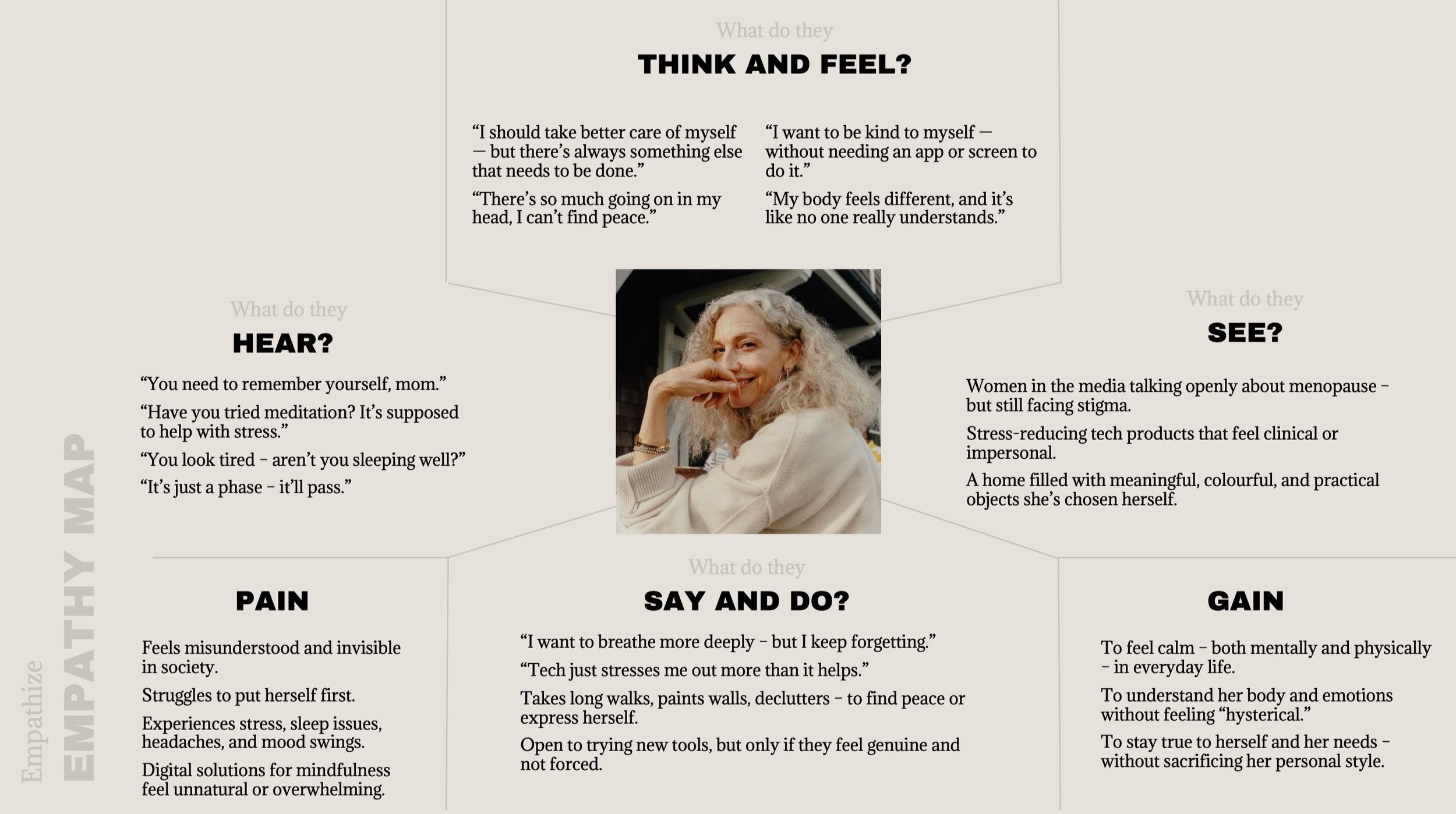
Design Drivers & Moodboard
Define
We translated our insights into design principles that shaped both the concept and materiality:
Design Drivers:
Intuitive and effortless (support breathing without instruction)
Tactile and visually guiding
Organic asymmetry
Contrast in surface and colour
Softness to the eye and touch
Natural material cues (stones, texture)
Moodboard:
Visual universe combining softness, strength, fluidity, and touch. Inspired by organic forms and sensory rituals — far removed from tech-dominated aesthetics.
Sketching & Material Experiments
Ideate
The physical form of Interlude was shaped through iterative sketching and prototyping. We worked with wax models, 3D prints, and foam shaping to explore tactile feedback, motion, and how breath could be visualized physically.
We landed on a minimal, asymmetrical ring with a built-in rhythm: the wearer traces or presses the malachite stone to guide a 4–7–8 breathing cycle. That breathing technique was popularised by Dr. Andrew Weil, who based it on ancient yogic practices; studies suggest it can activate the parasympathetic nervous system, helping reduce anxiety and promote calm.
Material Concept:
Malachite was chosen not just for its tactile quality but for its symbolic resonance — transformation, healing, and inner calm.
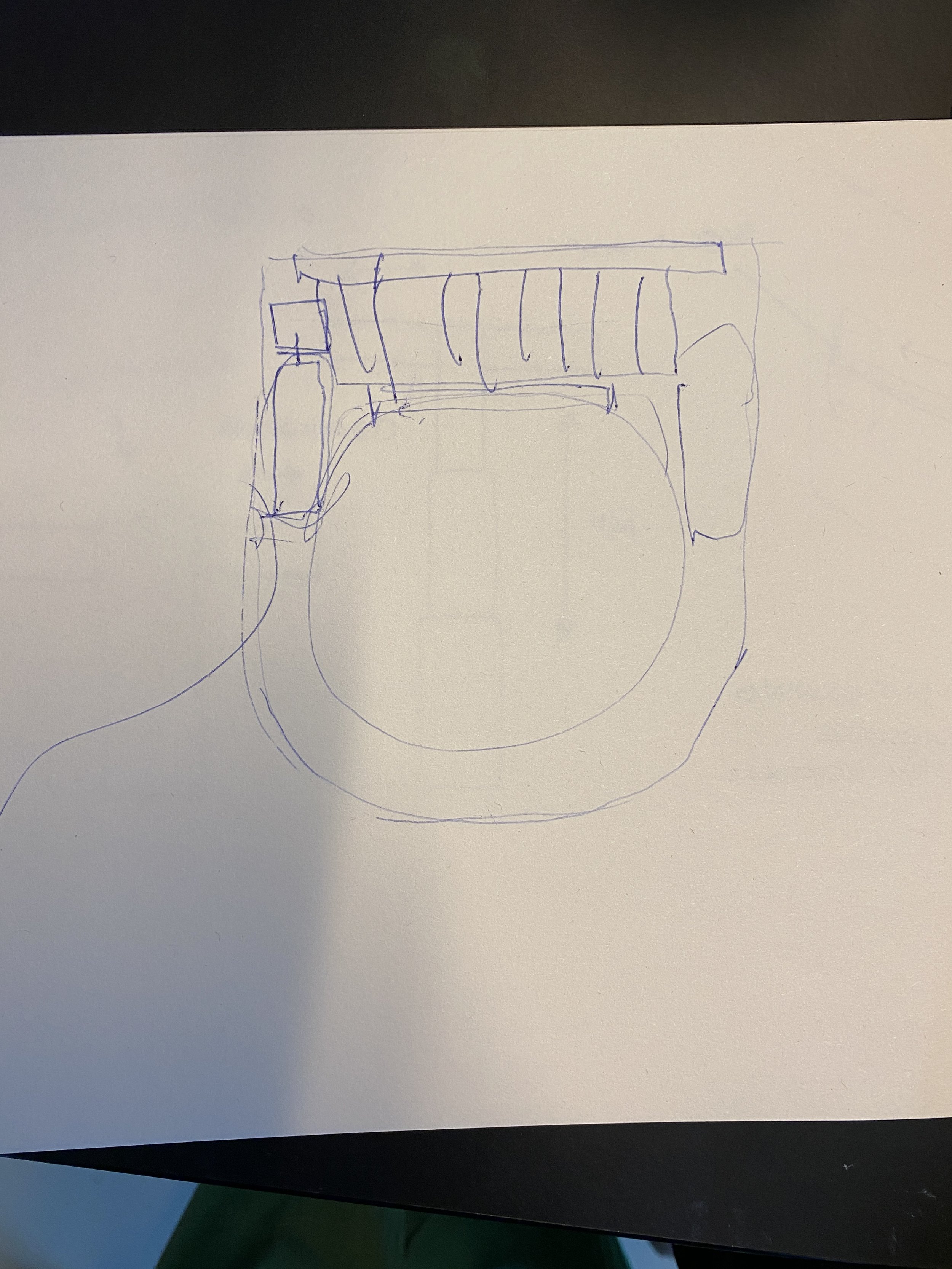
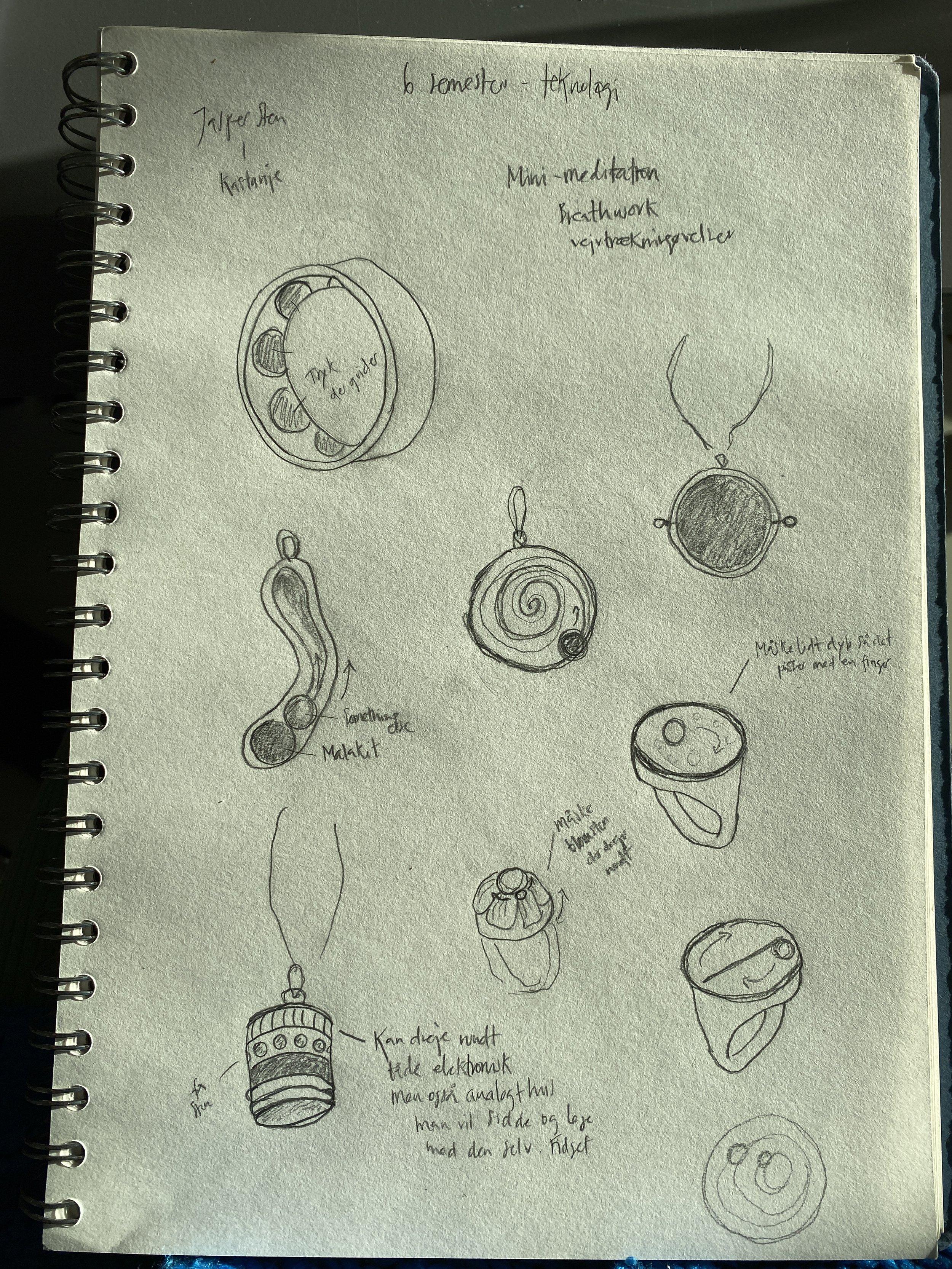

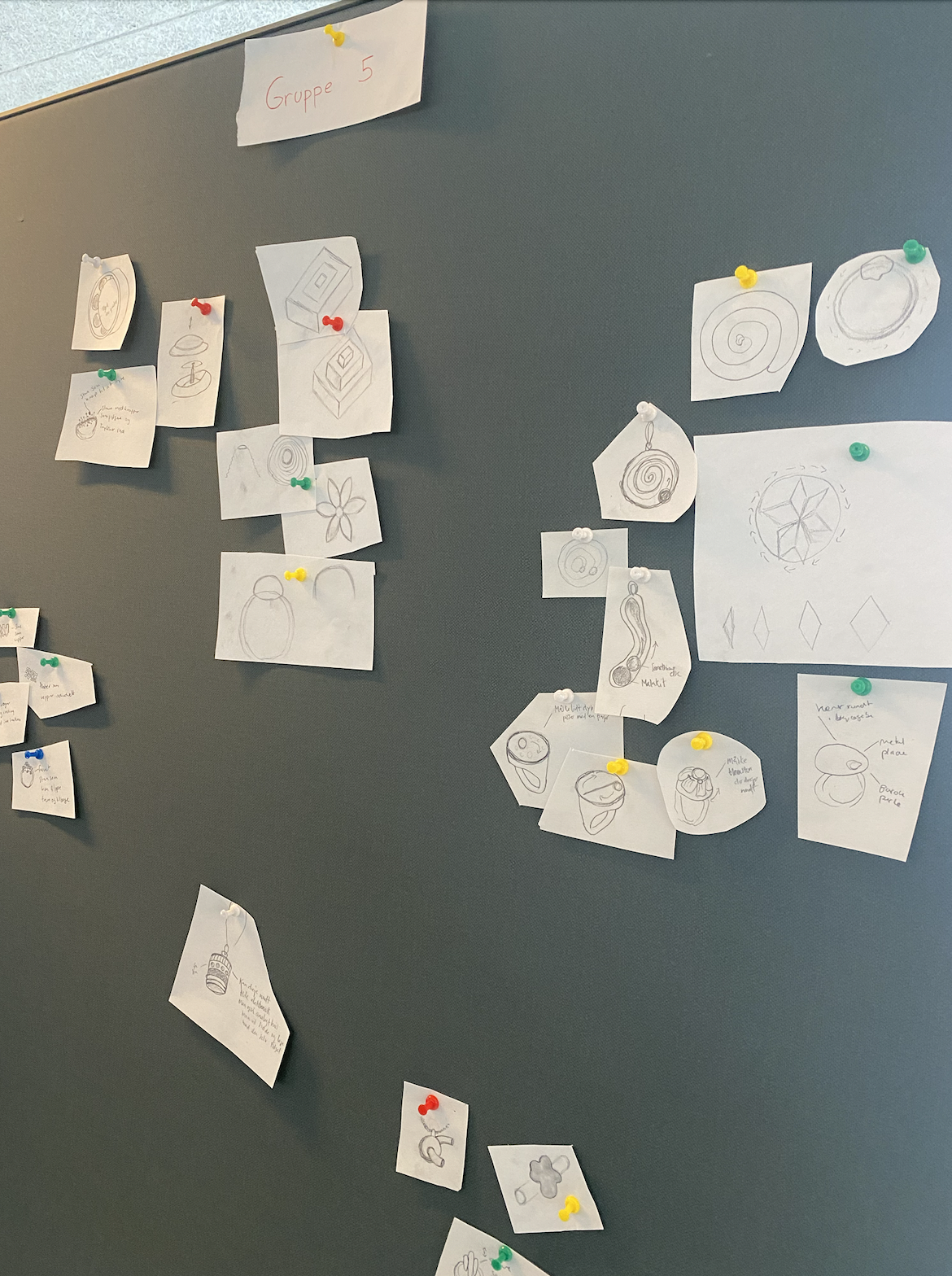
Prototype & Test
Key Insights
We tested the concept with users in sketch, mock-up, and storytelling form. Responses showed a strong connection to the idea of a mindful ring that requires no instruction or setup.
“This feels like something I’d actually use.”
“I love that it’s not another screen.”
“It feels like jewellery first — not a gadget.”
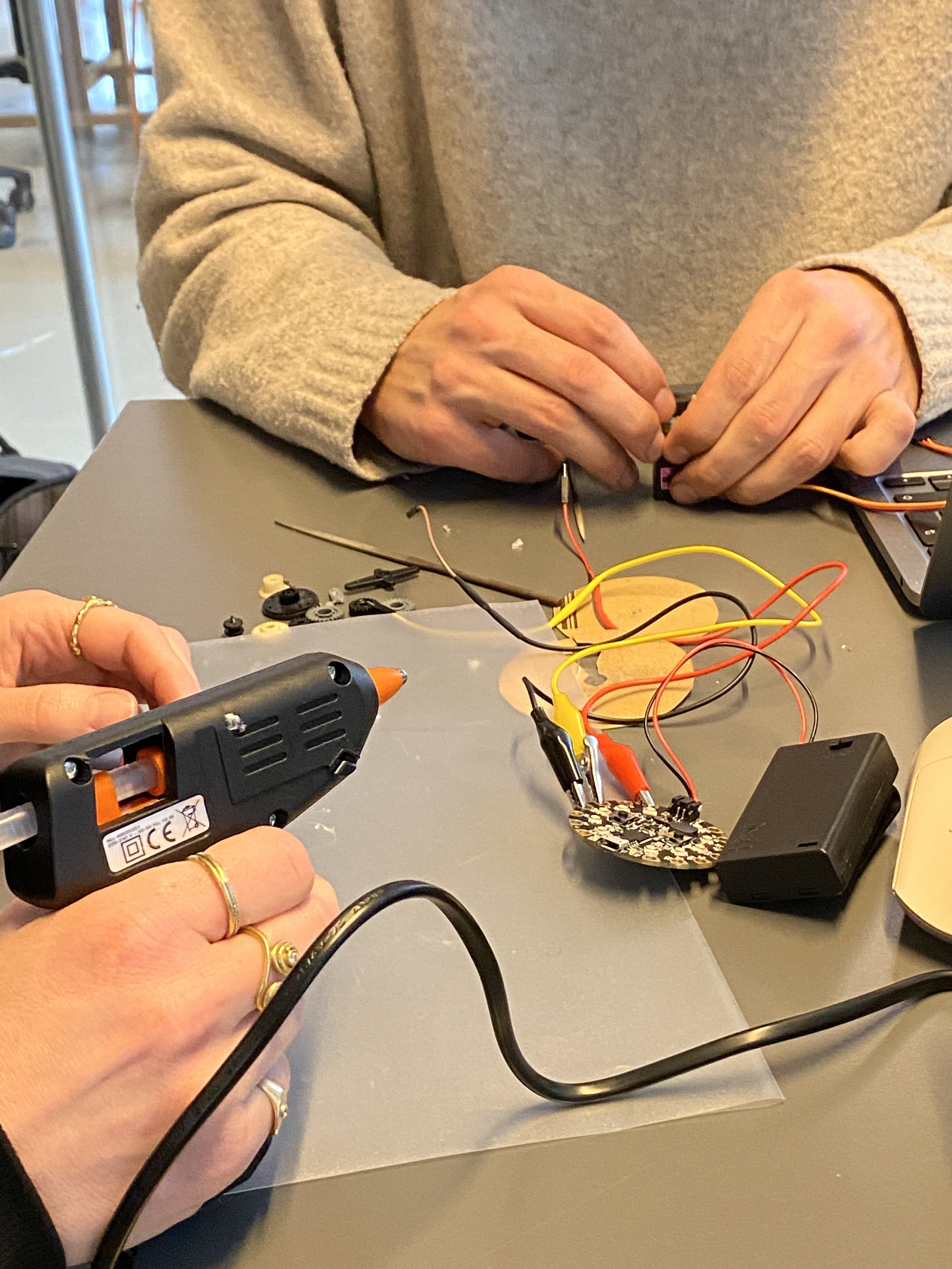
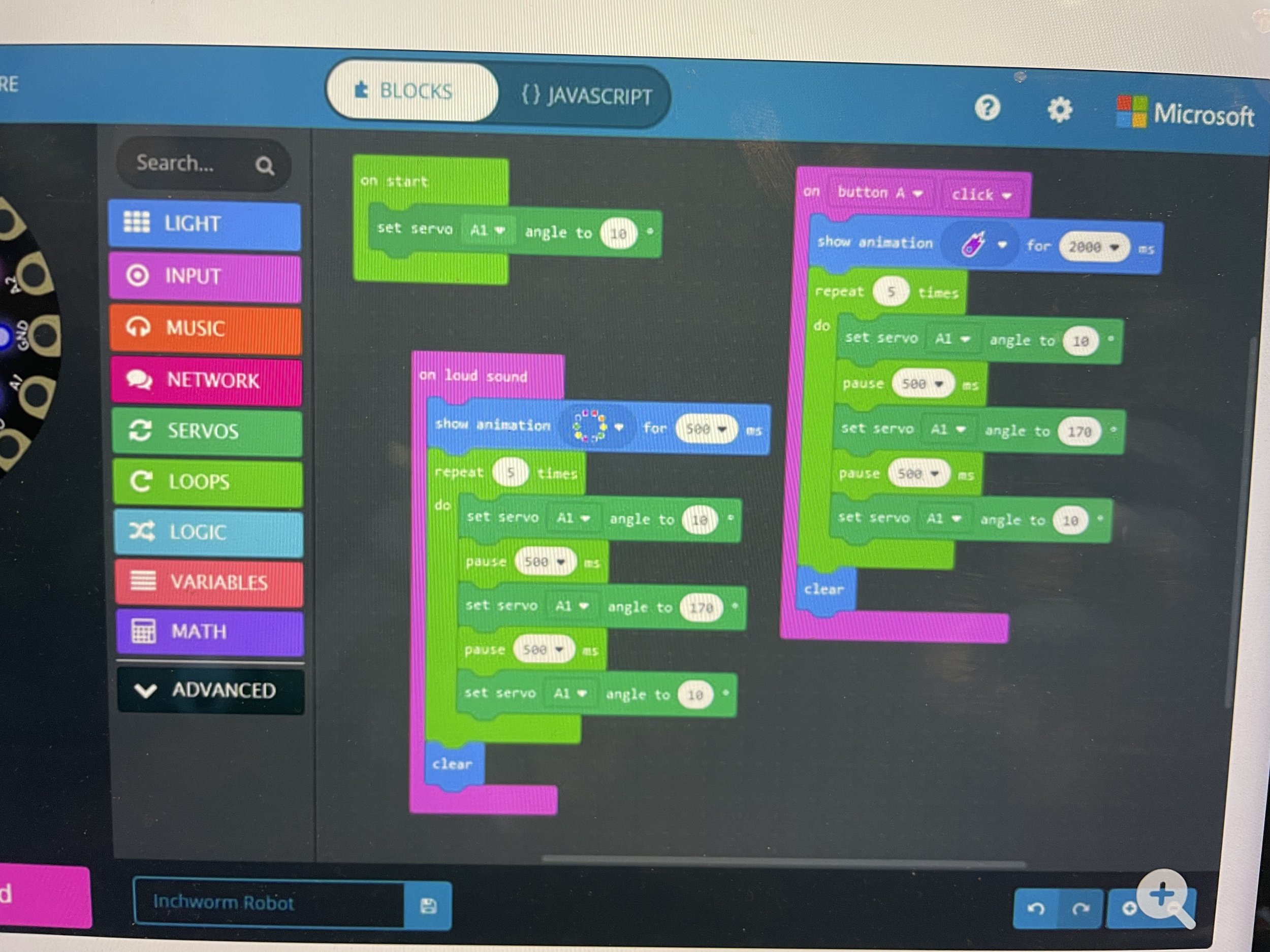
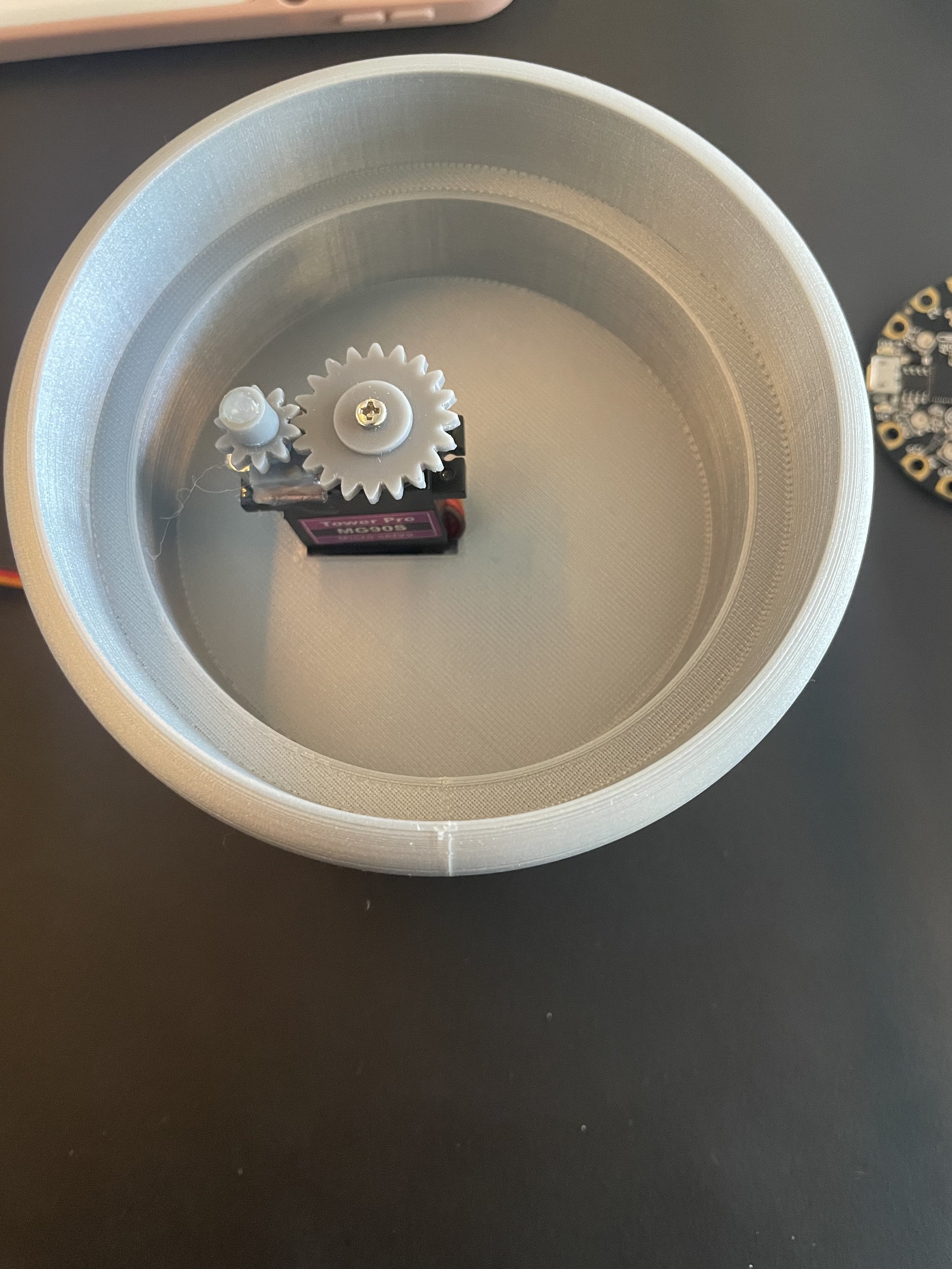

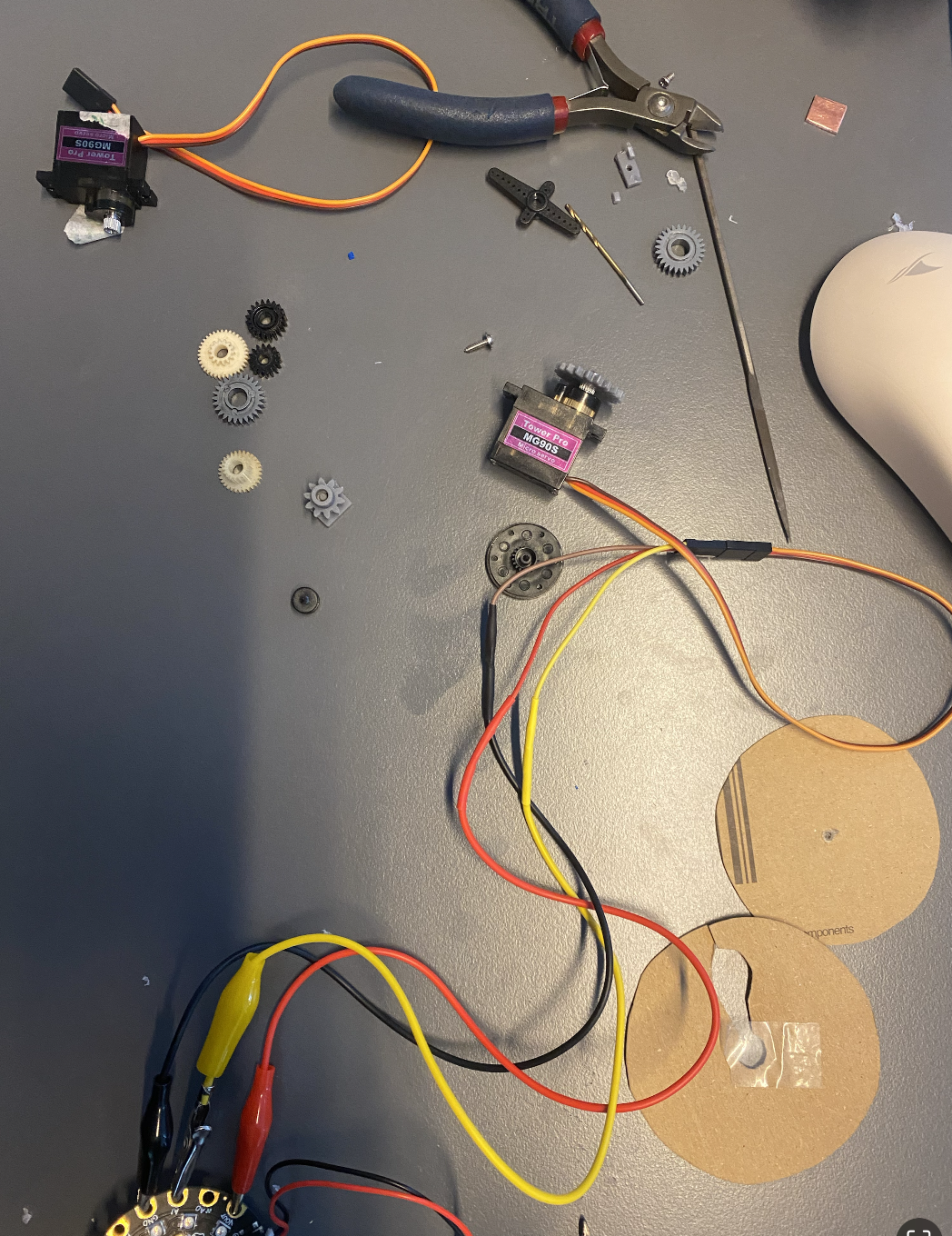
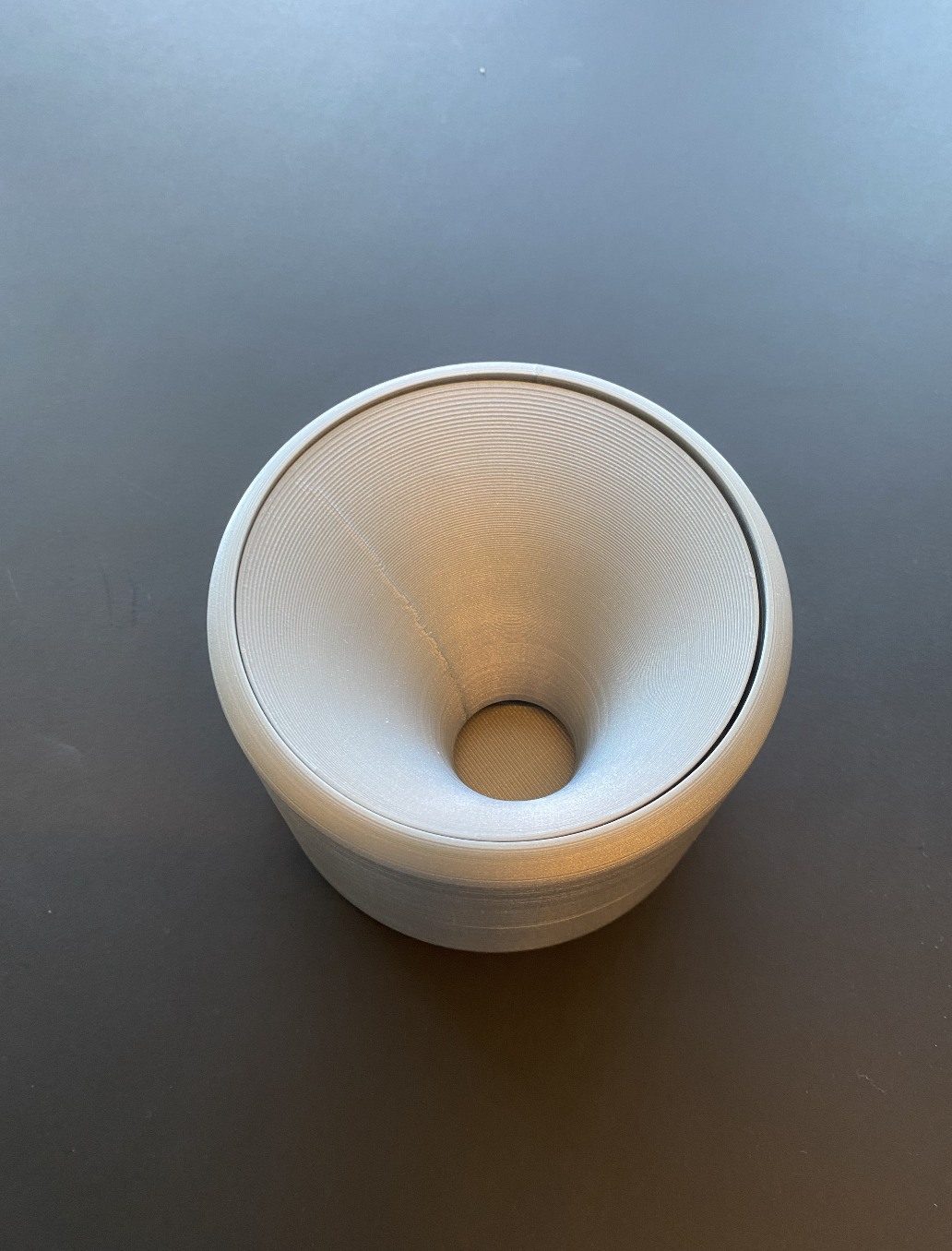
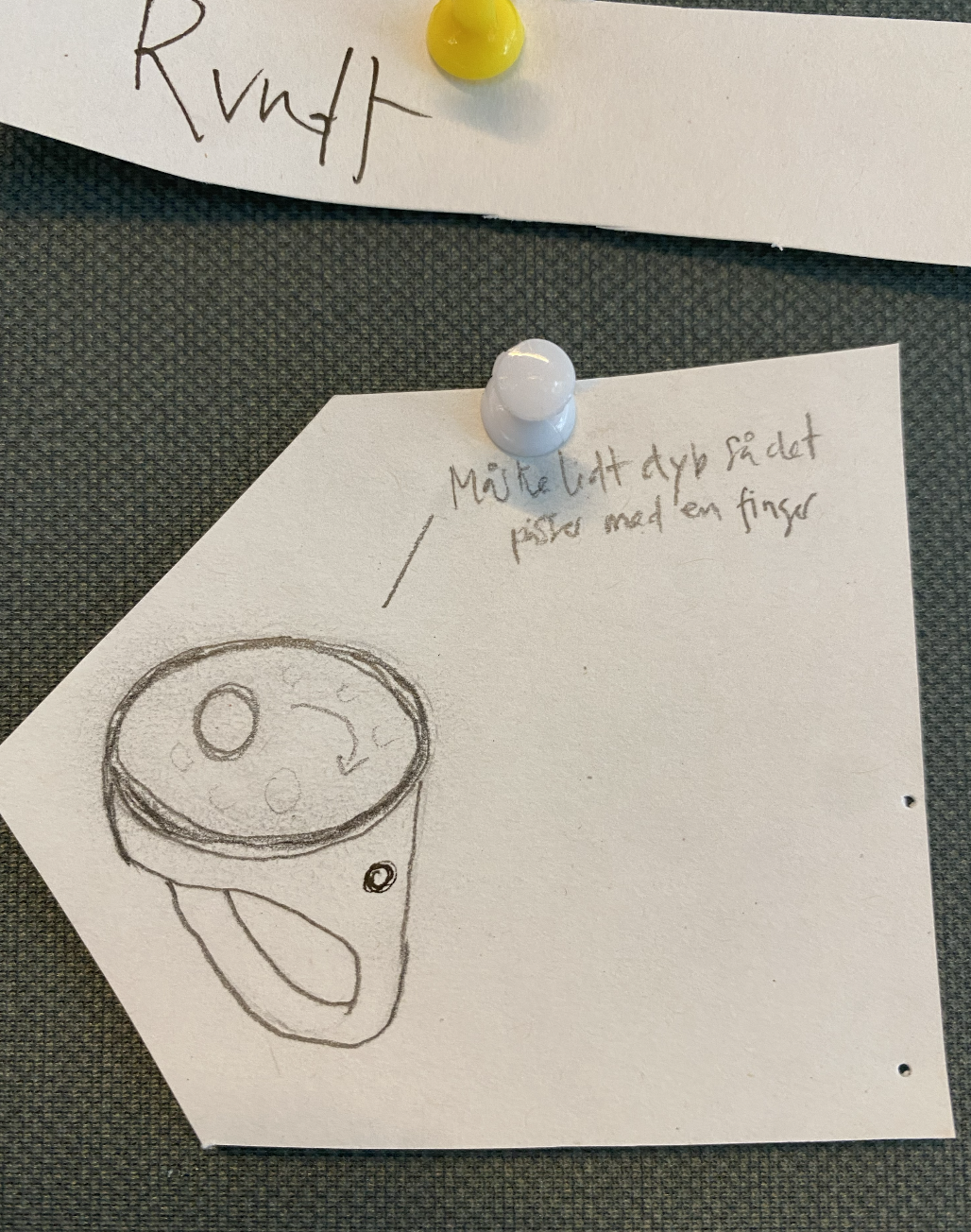
Outcome
Interlude offers an alternative to tech-centered wellbeing tools. It reconnects wearers to themselves through tactile calm, symbolic form, and intentional pauses. The ring is non-invasive and jewellery-first — its function is felt, not displayed.
This project showcases how emotional insight, material storytelling, and screen-free design can open up new directions in wellness jewellery.
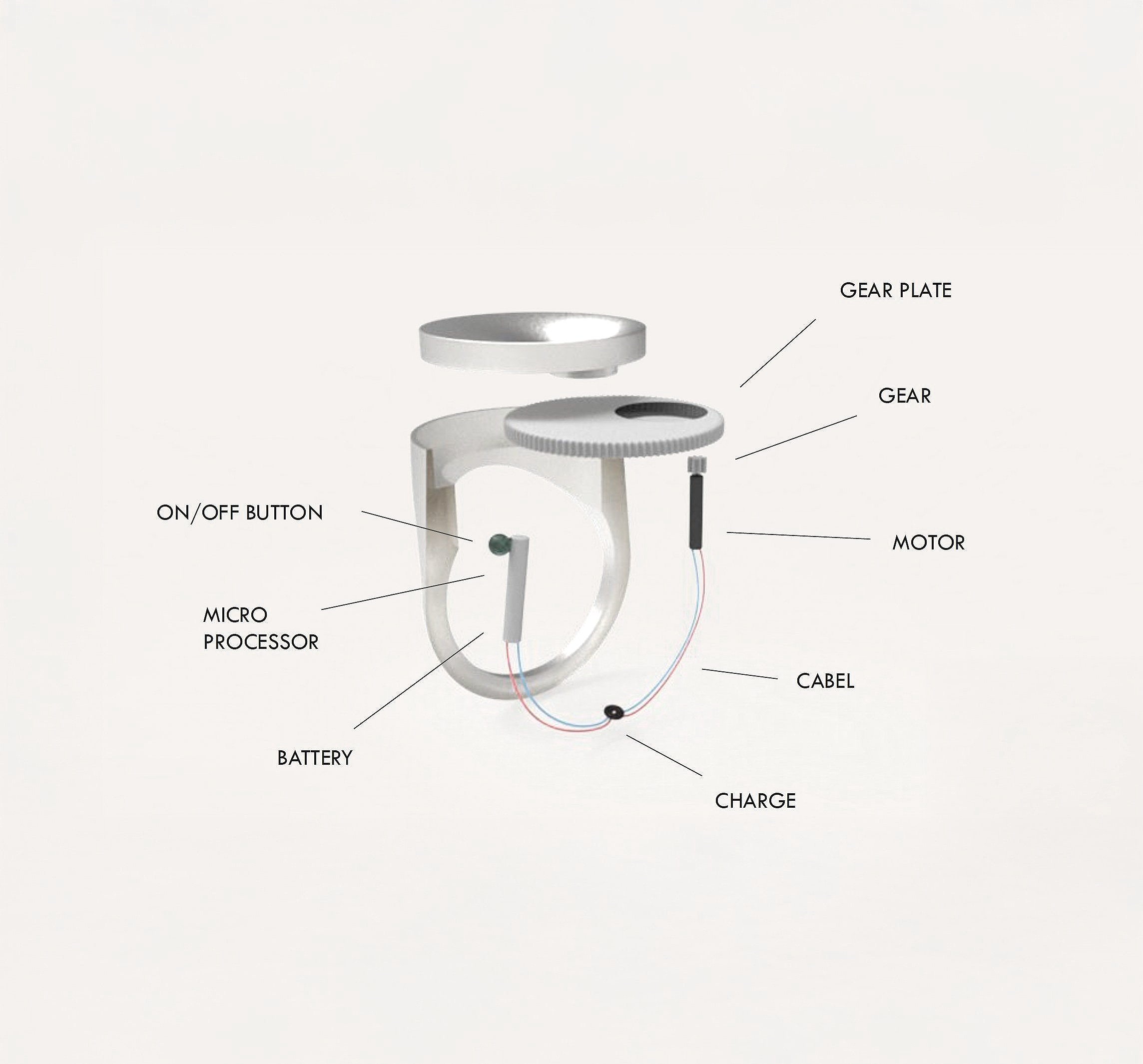
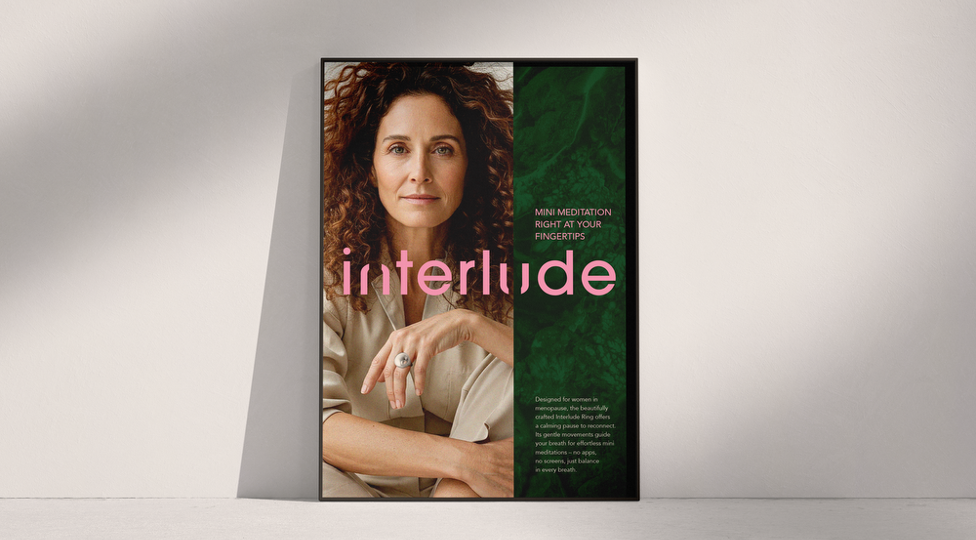
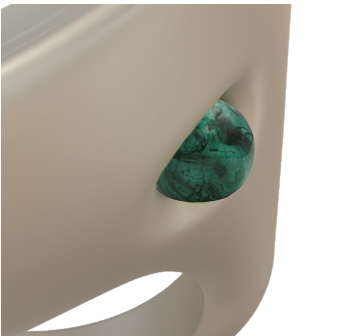
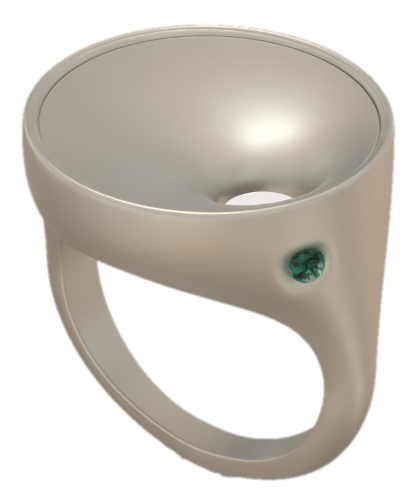
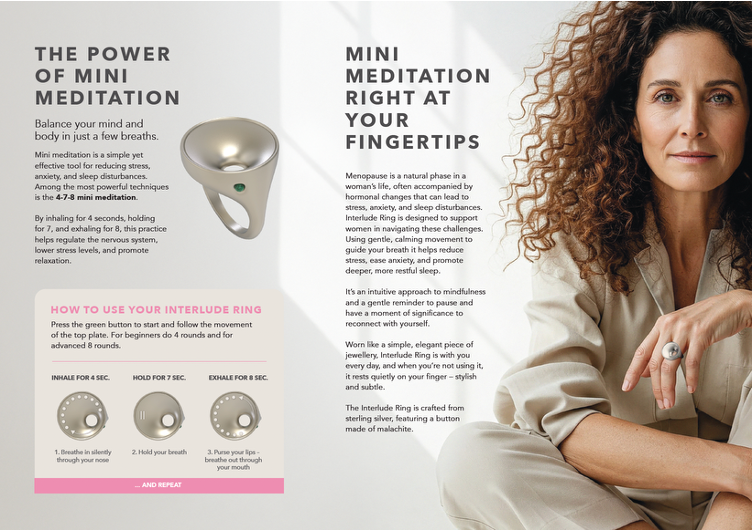
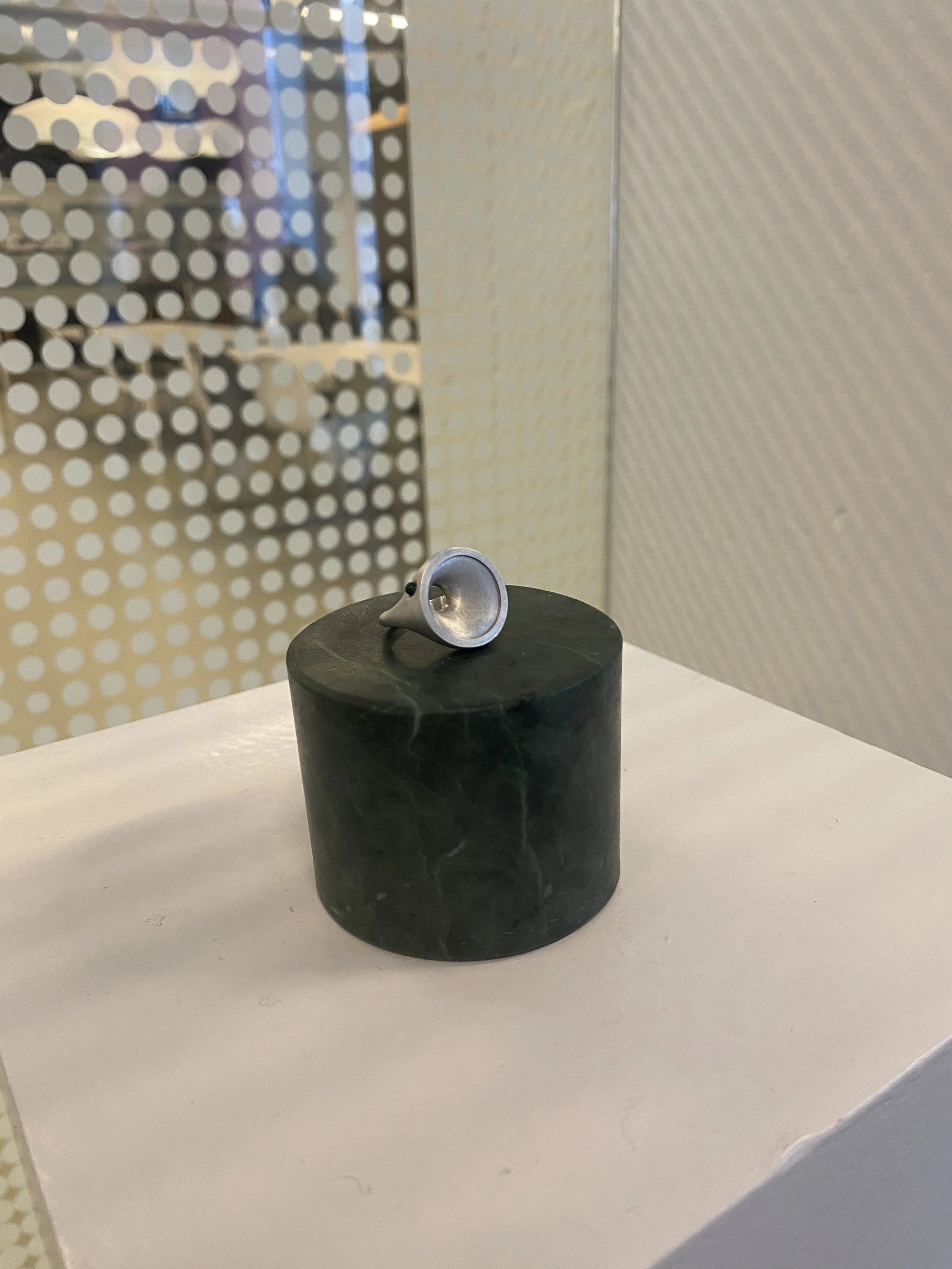
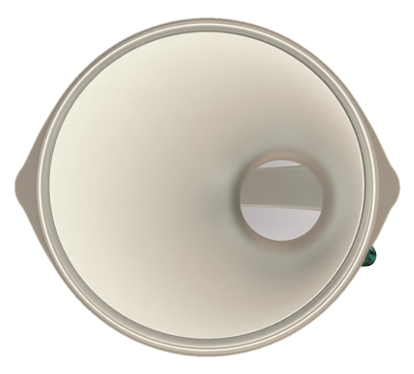
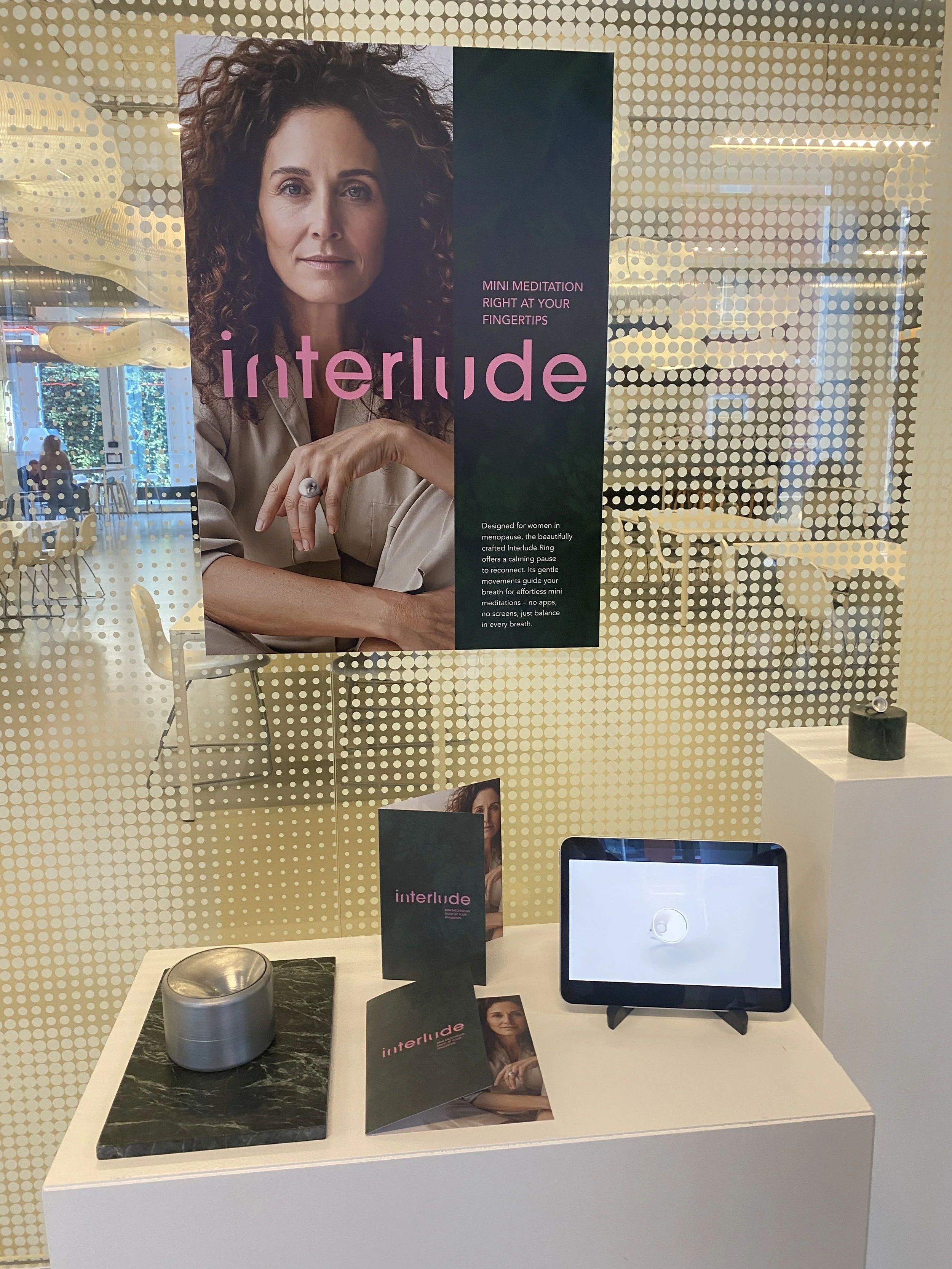
Team
Developed by:
Sine Harwits
Jannie Sander
Ketil Elson Billett
Olivia Hovmark Møller
Tuva Handeland
Guest mentor: Vanessa Julia Carpenter


